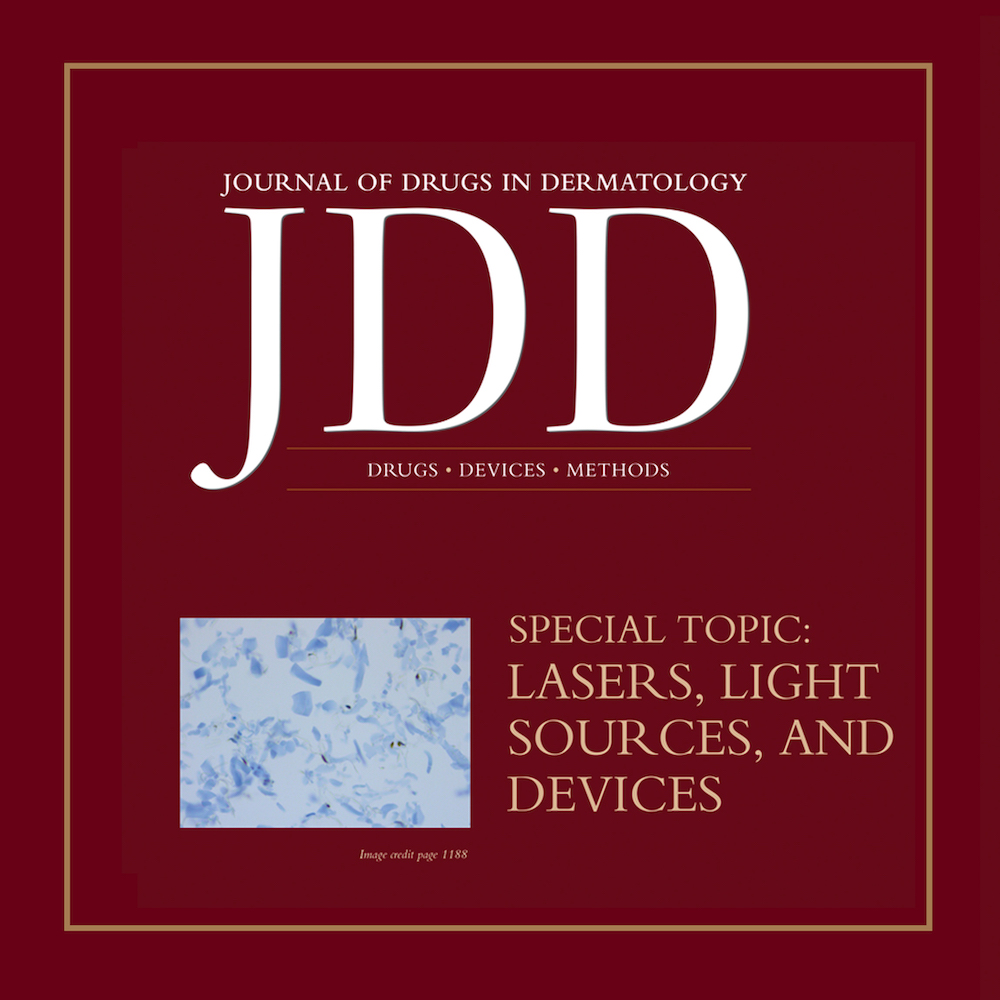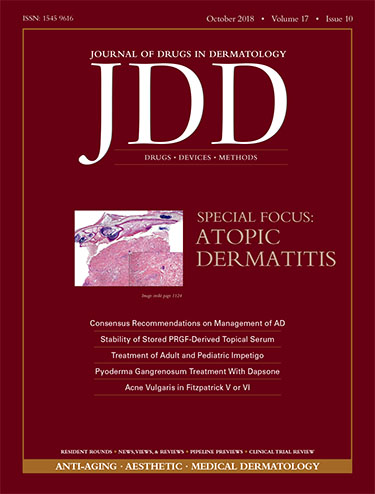JDD November Issue
 Here are the highlights for the November issue of JDD, which has a special focus on lasers, light sources, and devices.
Facial Skin Tightening With Microfocused Ultrasound and Dermal Fillers: Considerations for Patient Selection and Outcomes reviews of the application of microfocused ultrasound in combination with injectable dermal fillers as a treatment approach for lifting skin on the neck and …
Here are the highlights for the November issue of JDD, which has a special focus on lasers, light sources, and devices.
Facial Skin Tightening With Microfocused Ultrasound and Dermal Fillers: Considerations for Patient Selection and Outcomes reviews of the application of microfocused ultrasound in combination with injectable dermal fillers as a treatment approach for lifting skin on the neck and …
 Here are the highlights for the November issue of JDD, which has a special focus on lasers, light sources, and devices.
Facial Skin Tightening With Microfocused Ultrasound and Dermal Fillers: Considerations for Patient Selection and Outcomes reviews of the application of microfocused ultrasound in combination with injectable dermal fillers as a treatment approach for lifting skin on the neck and …
Here are the highlights for the November issue of JDD, which has a special focus on lasers, light sources, and devices.
Facial Skin Tightening With Microfocused Ultrasound and Dermal Fillers: Considerations for Patient Selection and Outcomes reviews of the application of microfocused ultrasound in combination with injectable dermal fillers as a treatment approach for lifting skin on the neck and … 

 Below are the issue highlights and editor picks for the November issue of JDD!
This month's Special Topic: Lasers, Light Sources, and Devices.
Microablative fractional resurfacing with the DOT laser enables treatment with short post-procedure recovery time and very low incidence of AE’s in The Safety of Laser Skin Resurfacing With the Microablative Carbon Dioxide Laser and Review of the …
Below are the issue highlights and editor picks for the November issue of JDD!
This month's Special Topic: Lasers, Light Sources, and Devices.
Microablative fractional resurfacing with the DOT laser enables treatment with short post-procedure recovery time and very low incidence of AE’s in The Safety of Laser Skin Resurfacing With the Microablative Carbon Dioxide Laser and Review of the …  Have you received the latest issue of the JDD? Below are Journal of Drugs in Dermatology highlights and editor picks for the October issue!
Consensus Recommendations on Adjunctive Topical Management of Atopic Dermatitis provides an overview of AD, summaries of pathophysiology and medical management, and discussion of epidermal barrier dysfunction and skin microbiome shifting associated with …
Have you received the latest issue of the JDD? Below are Journal of Drugs in Dermatology highlights and editor picks for the October issue!
Consensus Recommendations on Adjunctive Topical Management of Atopic Dermatitis provides an overview of AD, summaries of pathophysiology and medical management, and discussion of epidermal barrier dysfunction and skin microbiome shifting associated with …  Have you received your September JDD issue yet? The Special Focus of this month's issue is Aesthetics. Below are the highlights for the September issue!
Highlights:
Topical EGF is a safe, noninvasive, and effective in A Randomized, Double-
Blind, Placebo-Controlled, Split-Face Study of the Efficacy of Topical
Epidermal Growth Factor for the Treatment of Melasma.
The fourth in a ser …
Have you received your September JDD issue yet? The Special Focus of this month's issue is Aesthetics. Below are the highlights for the September issue!
Highlights:
Topical EGF is a safe, noninvasive, and effective in A Randomized, Double-
Blind, Placebo-Controlled, Split-Face Study of the Efficacy of Topical
Epidermal Growth Factor for the Treatment of Melasma.
The fourth in a ser …  Each month, the JDD Dermatology Podcast features an in-depth interview with one of the investigators from the Journal of Drugs in Dermatology current issue. July’s podcast, hosted by Dr. Adam Friedman, features Dr. Beth McLellan, an assistant professor of Dermatology from the Albert Einstein College of Medicine and an expert in supportive oncodermatology – the treatment and prevention of cutan …
Each month, the JDD Dermatology Podcast features an in-depth interview with one of the investigators from the Journal of Drugs in Dermatology current issue. July’s podcast, hosted by Dr. Adam Friedman, features Dr. Beth McLellan, an assistant professor of Dermatology from the Albert Einstein College of Medicine and an expert in supportive oncodermatology – the treatment and prevention of cutan …